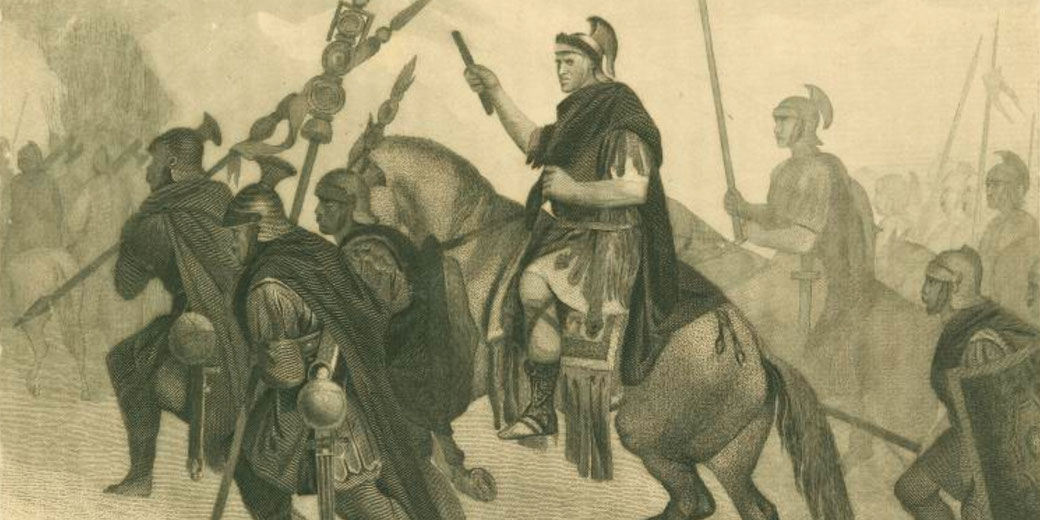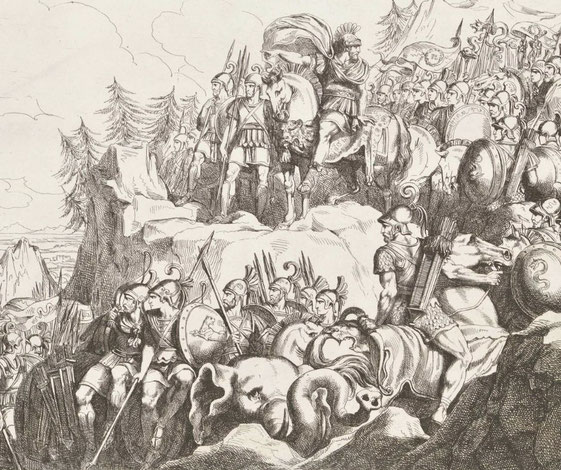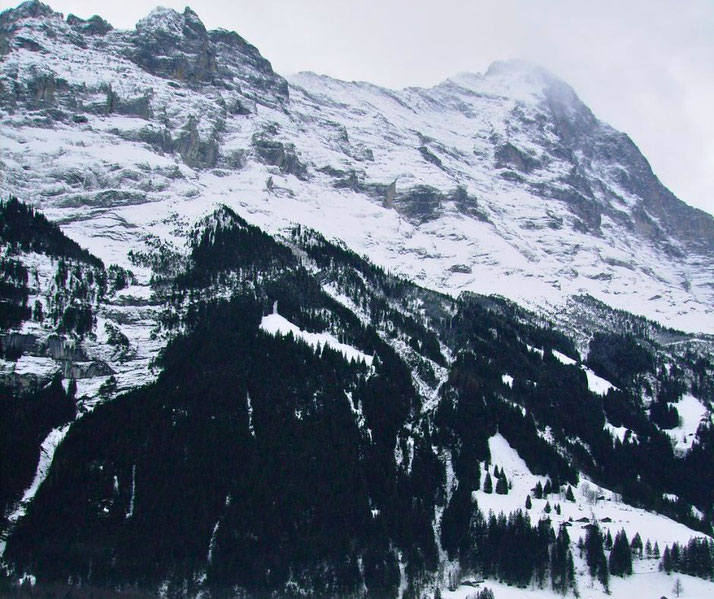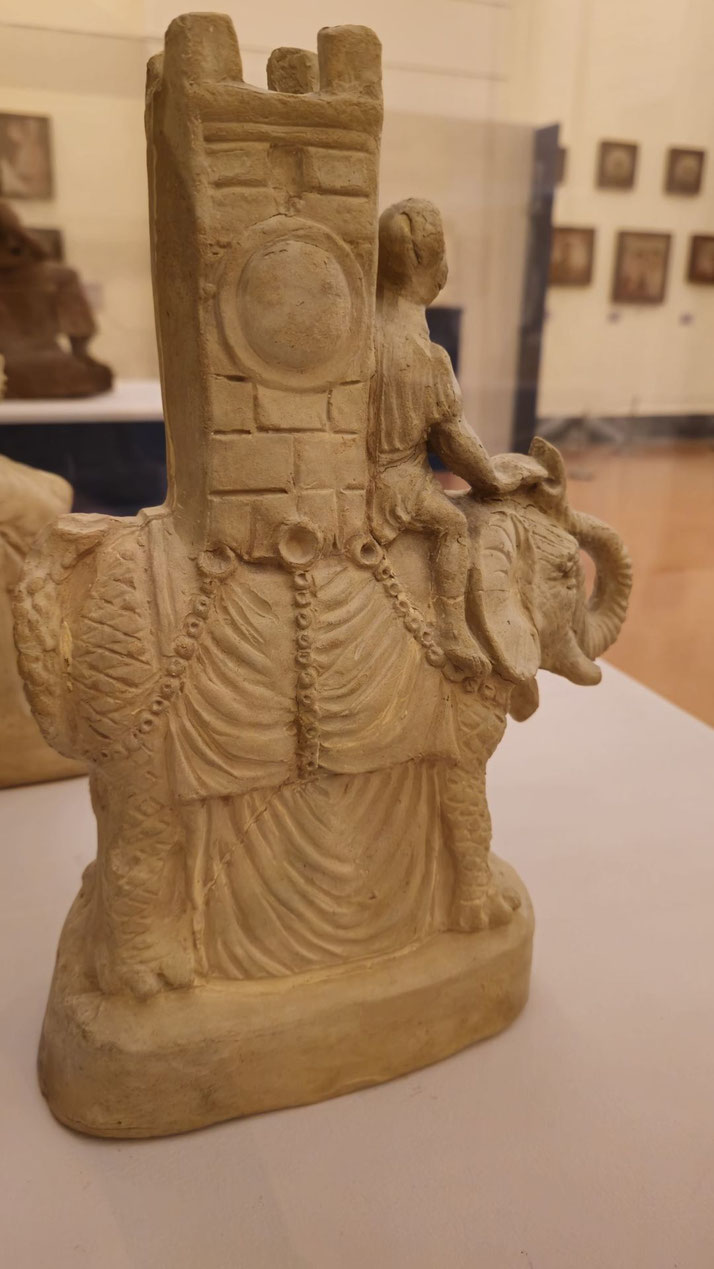How did Hannibal cross the Alps with elephants?

Hannibal Barca, the daring Carthaginian general, is a name that has echoed through the annals of history. Renowned for his military genius and tactical acumen, his most famous accomplishment remains the seemingly impossible feat of crossing the Alps with an army of men, horses, and war elephants.
The crossing, a pivotal moment in the Second Punic War, caught Rome off-guard and cemented Hannibal's place in the pantheon of military strategists.
Yet, how did he pull off this remarkable feat?
Hannibal Barca: A Brief Background
Born in 247 BCE in Carthage, a powerful city-state in present-day Tunisia, Hannibal grew up in the shadow of the First Punic War, which had left his homeland weakened and humiliated.
His father, Hamilcar Barca, was a respected general who instilled in his son a deep hatred for Rome and a determination to avenge Carthage's losses.
As a young man, Hannibal swiftly rose through the ranks of the Carthaginian military, exhibiting an exceptional grasp of strategy and an iron will.
When his father died in 229 BCE, Hannibal took the reins of the Carthaginian army in Spain.
Over the next decade, he expanded Carthage's influence and territories, eventually capturing the city of Saguntum.
This act of aggression against a Roman ally marked the beginning of the Second Punic War, setting the stage for Hannibal's daring Alpine crossing.

The Second Punic War
The Second Punic War (218-201 BCE) was a fierce and protracted conflict between the two superpowers of the ancient Mediterranean: Rome and Carthage.
The war began as a dispute over control of Spain, but it would soon escalate into a life-or-death struggle for dominance in the region.
The stakes were incredibly high, as the victor would emerge as the preeminent power in the Western Mediterranean.
The early years of the war saw Hannibal's Carthaginian forces on the offensive, launching a series of bold and audacious campaigns against Rome.
His relentless and unpredictable tactics put immense pressure on Rome's military and political institutions, forcing the Romans to adapt and innovate in response to the Carthaginian threat.
The Daring Alpine Invasion Plan
In 218 BCE, Hannibal faced a critical decision: how to invade Italy and strike at the heart of the Roman Republic.
He knew that the direct route across the Mediterranean was heavily guarded by Roman naval forces, making a seaborne invasion highly risky.
Instead, he devised a bold and unexpected plan: to lead his army across the formidable Alps mountain range and into Italy from the north.
This daring strategy relied on the element of surprise, as the Romans would never anticipate an attack from such a treacherous and inhospitable route.
Yet, Hannibal was well aware that the journey would be fraught with danger, as the Alps presented a host of obstacles, including extreme weather, treacherous terrain, and hostile tribes.
The logistical challenges of moving tens of thousands of men, horses, and war elephants across the mountains were immense, but Hannibal was determined to succeed.

The Life-Threatening Challenges of the Crossing
The arduous journey through the Alps was a grueling test of endurance and resilience for Hannibal's army.
The high altitude, freezing temperatures, and sudden snowstorms took a heavy toll on the troops, as they struggled to navigate the treacherous mountain paths.
Many soldiers succumbed to frostbite, hunger, or exhaustion, while others perished in avalanches or rockslides.
Moreover, the Carthaginians faced constant harassment from local tribes who sought to exploit their vulnerability.
These tribes launched ambushes and attacked the supply lines, inflicting further casualties on the already-weakened Carthaginian force.
How did he do it?
Hannibal's successful crossing of the Alps with his army was a remarkable feat of leadership, perseverance, and adaptability.
Even before embarking on the expedition, Hannibal took great care to gather information about the route, including the terrain, weather conditions, and potential threats from local tribes.
He secured guides from the friendly Celtic tribes, who were familiar with the region and its challenges, and used their knowledge to chart a course that would maximize their chances of success.
In addition, Hannibal's charismatic leadership and tactical ingenuity played a critical role in keeping his army motivated and disciplined during the arduous journey.
He often led from the front, inspiring his men to push through the harsh conditions and keeping their spirits high with rousing speeches and displays of courage.
Hannibal's ability to adapt to changing circumstances was also essential in overcoming the obstacles they faced.
When confronted with difficult terrain, such as steep slopes and narrow paths, Hannibal ordered his men to carve out a more accessible path or build makeshift bridges to traverse rivers and chasms.

Another crucial factor in the successful crossing was Hannibal's logistical prowess. He ensured that his army had enough food and resources to survive the journey by organizing foraging parties to gather food and relying on local settlements to replenish their supplies where possible.
Hannibal's tactical ingenuity was also on display when dealing with hostile tribes they encountered along the way.
He used decoys, ambushes, and night-time maneuvers to outwit and overcome enemy forces, ensuring his army's safe passage through the mountains.
Ultimately, Hannibal's ability to lead, strategize, adapt, and persevere in the face of adversity enabled his army to successfully navigate the treacherous Alpine terrain and ultimately descend into Italy with most of his army still intact.
Why were the elephants so important to Hannibal?
The war elephants in Hannibal's army were not only a formidable weapon but also a symbol of Carthage's power and prestige.
These massive creatures, native to Africa and Asia, struck fear into the hearts of Rome's soldiers, who had never faced such intimidating adversaries on the battlefield.
Hannibal's decision to bring them across the Alps, despite the logistical nightmare it presented, underscored his audacious ambition and relentless pursuit of victory.
However, the war elephants' effectiveness in the Alpine crossing was limited; many of the animals succumbed to the harsh conditions, disease, or exhaustion.
Those that survived the journey played a more psychological than tactical role in the Italian campaign, as their sheer presence on the battlefield often demoralized and disoriented the Roman troops.
Nevertheless, the inclusion of elephants in Hannibal's army became an enduring symbol of his daring and resourcefulness.
Changing the nature of ancient warfare
Hannibal's crossing of the Alps was a pivotal moment in ancient history, a daring and unprecedented feat of military strategy that cemented his place as one of the most legendary figures of his time.
His ability to overcome immense challenges and adapt to changing circumstances demonstrated his remarkable leadership skills and tactical ingenuity.
Hannibal's journey across the Alps also had a profound impact on the ancient world, challenging the military conventions of the time and inspiring future generations of military strategists.
What do you need help with?
Download ready-to-use digital learning resources
Copyright © History Skills 2014-2025.
Contact via email
With the exception of links to external sites, some historical sources and extracts from specific publications, all content on this website is copyrighted by History Skills. This content may not be copied, republished or redistributed without written permission from the website creator. Please use the Contact page to obtain relevant permission.





